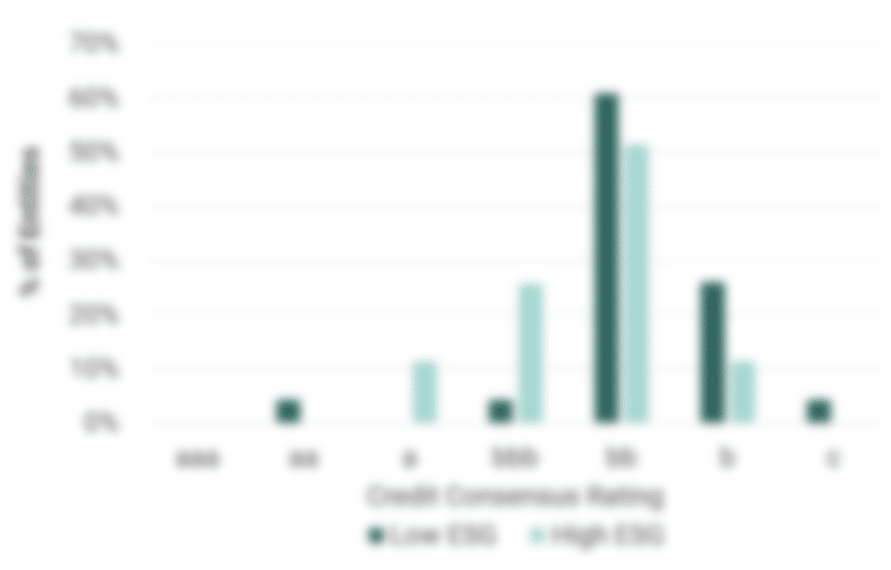
Corporate ESG profiles are driving some key business decisions. ESG scores can be critical in choosing suppliers; and for listed firms it can determine their suitability as an investment and ultimately their funding costs. This paper looks at the link between ESG profiles and credit risk.
Moody’s ESG scores and related analytics have up to 15 years of history with a core database covering more than 100,000 companies. Credit Benchmark have been providing consensus credit ratings since 2015, covering around 30,000 corporates and financials globally.
This study looks at a sample of global corporate issuers: 58 in the Oil & Gas sector and 56 in the Industrials sector.
Figure 1 shows the credit distributions for Oil & Gas companies split by ESG score, with a score of 30 as the boundary. There are 23 companies in the Low Score category [please continue below to access full report].
Figure 1: Credit Distributions, Oil & Gas, by ESG score
